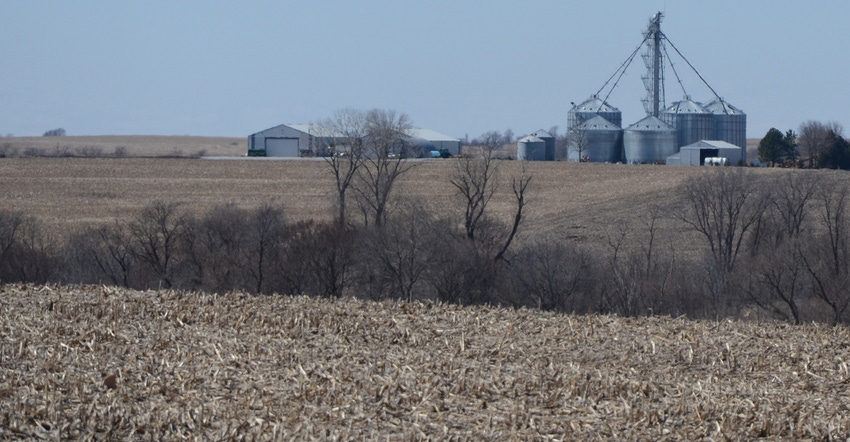
Land is consistently ranked as a relatively stable investment, whether it's the eastern or western Corn Belt. However, the factors affecting the change in values over the past 10 years vary from one part of the Corn Belt to the other.
As part of the Farm Progress Virtual Experience, Todd Kuethe, associate professor and Schrader chair in farmland economics at Purdue University, and Jim Jansen, University of Nebraska Extension agricultural economist, broke down the changes in land values and cash rental rates in different parts of the Corn Belt — and the different factors driving those values.
Each year, Purdue University conducts a survey of various professionals focused on Indiana's farmland market, including rural appraisers, ag lenders and farmers themselves. The survey collects information about current land values in the state for different regions, asking about individual counties, current markets in June of a given year, the previous December, and gauging the coming December.
Related: Complete coronavirus coverage
Land is split into three different quality grades: top, average and poor, based on respondents' report of long-term corn yield productivity.
"The big news for this year is land values are up," Kuethe says. "If we would have told our respondents a year ago in 2019 that we'd see land values up 3% to 6% depending on what part of the state you're in, people would be very excited."
Across Indiana in 2020, the top quality tier of land increased an average of 4.5%, while the average quality tier increased 3.2%, and poor quality increased 6.3%. While land values increased over 2019, Kuethe notes values still are down compared to the highs of 2014.
"Most of that gain we've seen over 2020 from June 2020 to June 2019 actually took place in the second half of 2019," he adds. "Between June and December of last year, prices increased 6% to 7%. Since December, we've seen prices tail off around 1.5% to 2% around the state. Some of that maybe has to do with the differences in the economic conditions with the coronavirus pandemic."
Kuethe notes this decline is expected to continue into December of this year.
The University of Nebraska-Lincoln Farm Real Estate Market Survey breaks up the state into eight agricultural statistics districts. While the eastern third of Nebraska more closely follows the trends of the central Corn Belt, the western two-thirds are more similar to rest of the High Plains, Jansen says.
"Similar to Indiana, we've seen a slight increase in the market value of land that we estimated as of Feb. 1, compared to Feb. 1, 2019," Jansen says. "We did note a few areas of the state where a 1% change up or down would basically be unchanged, but we also noted some areas — around the Omaha and Lincoln metro areas — in that east district we noted a slight increase of 5%. Overall for the state of Nebraska, we noted just a slight increase of about 3%."
Key drivers
Both surveys ask respondents about major drivers of land values in their market area. For Purdue's survey, each factor was rated from negative to positive, on a scale from minus-5 to plus-5.
On the negative side, the main driver is negative returns.
"We still have low commodity prices for both crops and livestock," Kuethe says. "We do have some farmers that are increasingly in liquidity issues. We don't have that reserved capital from high commodity prices that we saw five to six years ago. There are still a lot of farmers out there with cash willing to make investments when they see opportunities, but they're also being a little more cautious. That's really putting downward pressure on land."
In Nebraska, Jansen says the most commonly used barometer for the revenue potential of an asset is corn, and that's been the primary negative driver on land values.
"We're seeing a slight decline in estimated market value of corn, and there's been various kinds of disaster or financial assistance payments that may be coming out this year," he says. "During the fall of 2019, a lot of our survey respondents reported Market Facilitation Program payments providing a degree of liquidity or solvency to farm operations."
Another negative factor specific to Nebraska is high property taxes.
"Farm real estate tax is one of the negative forces on real estate, because a retired landowner, having to pay real estate taxes in this state relative to surrounding states, it's one challenge a lot of people are facing," Jansen says. "This is a policy issue many folks are taking a look at."
However, a positive factor across the U.S. is a low return on alternative investments.
"A lot of farmland purchasers are farmers themselves. The rest are usually people from rural areas or from the state looking to make investments," Kuethe says. "When you have such volatile returns in things like the equities markets, although returns for farmland are somewhat lower than what we see in other investments, they're very stable returns."
Another factor is a limited supply on the land market.
"The last three years, our respondents have continually said that the volume of land going onto the market is less than the year before," Kuethe says. "We're seeing a real tightening of supply. I think that will continue into the next year, particularly as the coronavirus pandemic continues. People are in a real wait-and-see attitude, hesitant to make larger moves."
The biggest positive factor, Jansen adds, is low interest rates.
"As an individual seeking to buy land, you have the ability to go out and purchase land for a fixed period of time at probably some of the lowest real interest rates we've seen in recent history," he says. "That's one factor that's providing some degree of stability to the ag land markets."
Read more about:
Covid 19About the Author(s)
You May Also Like






